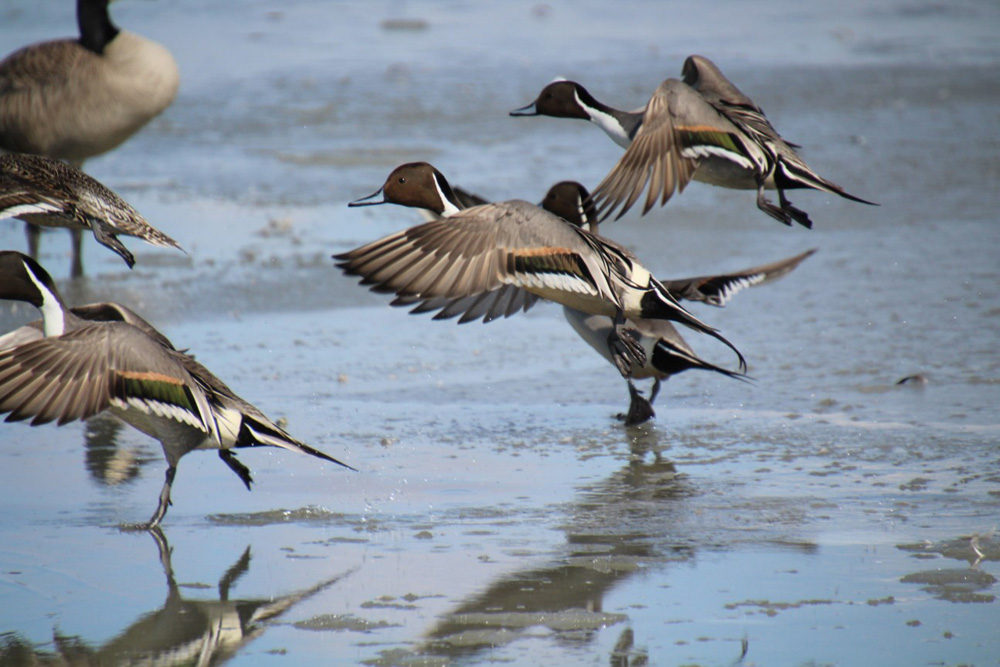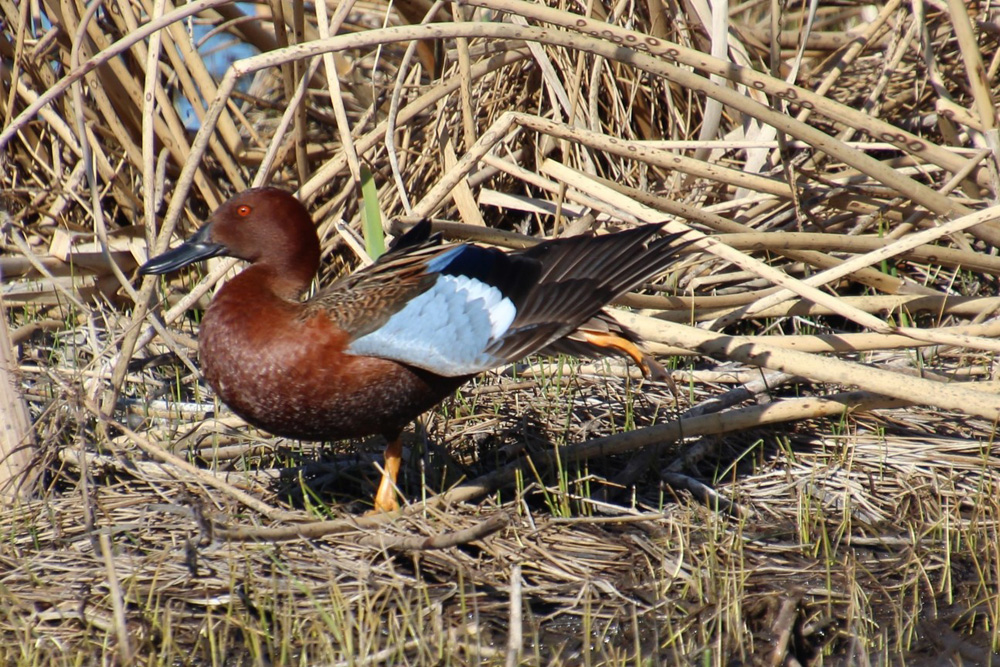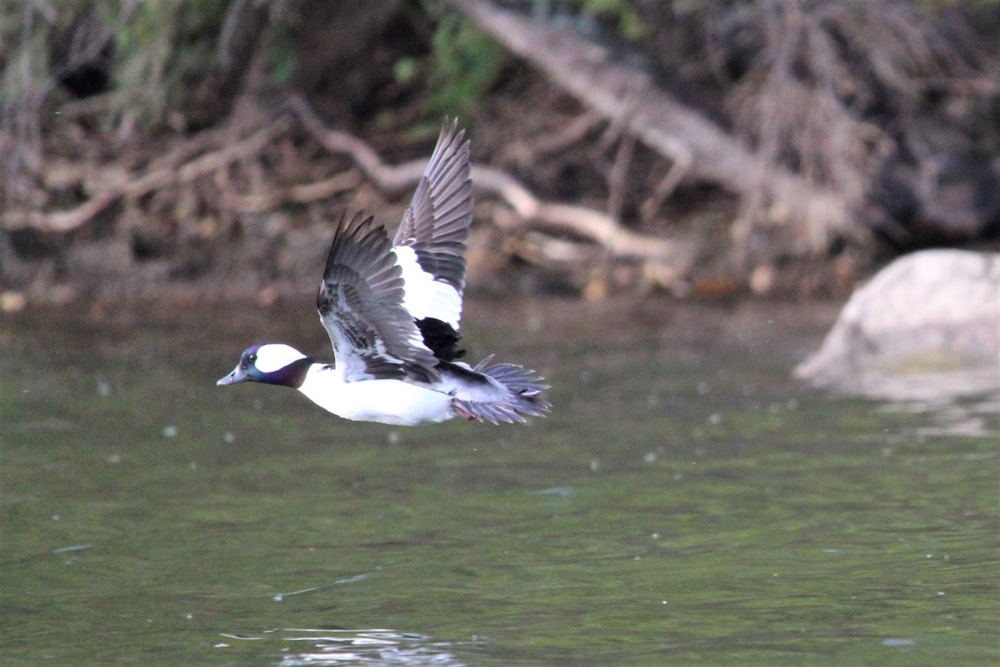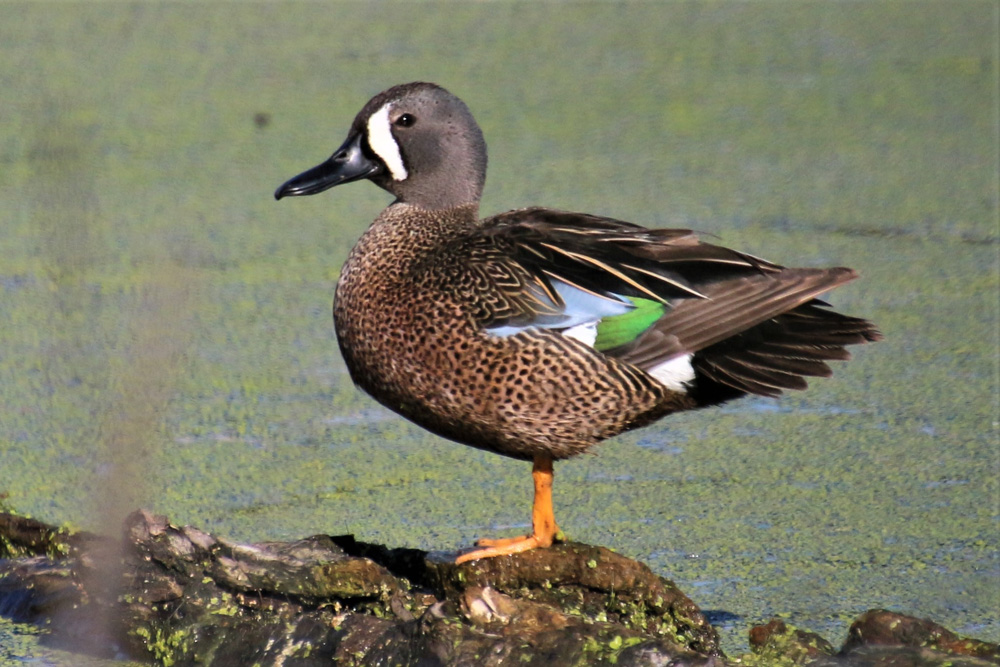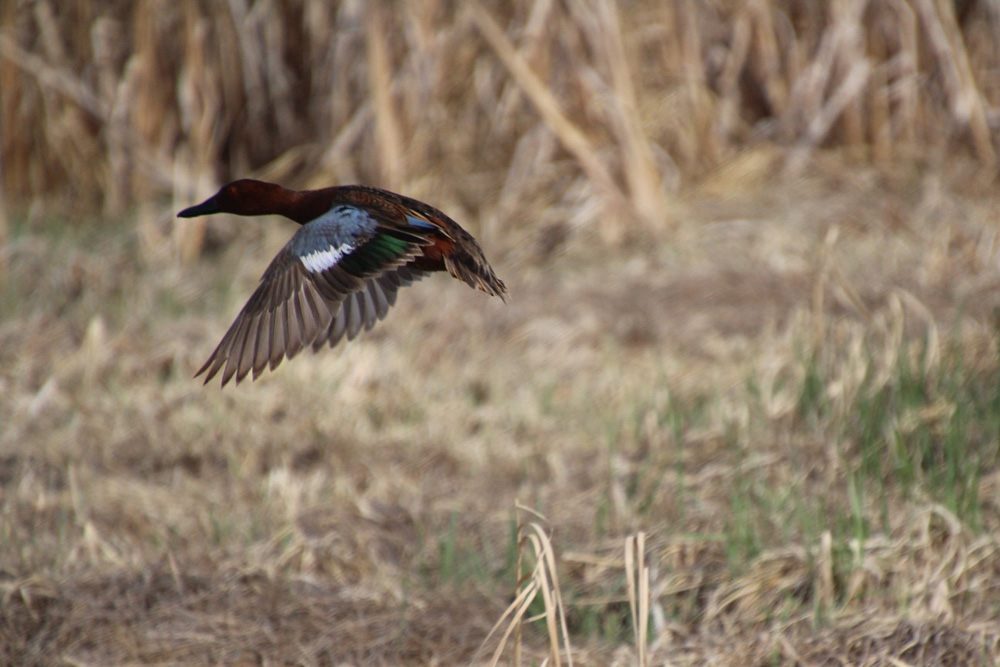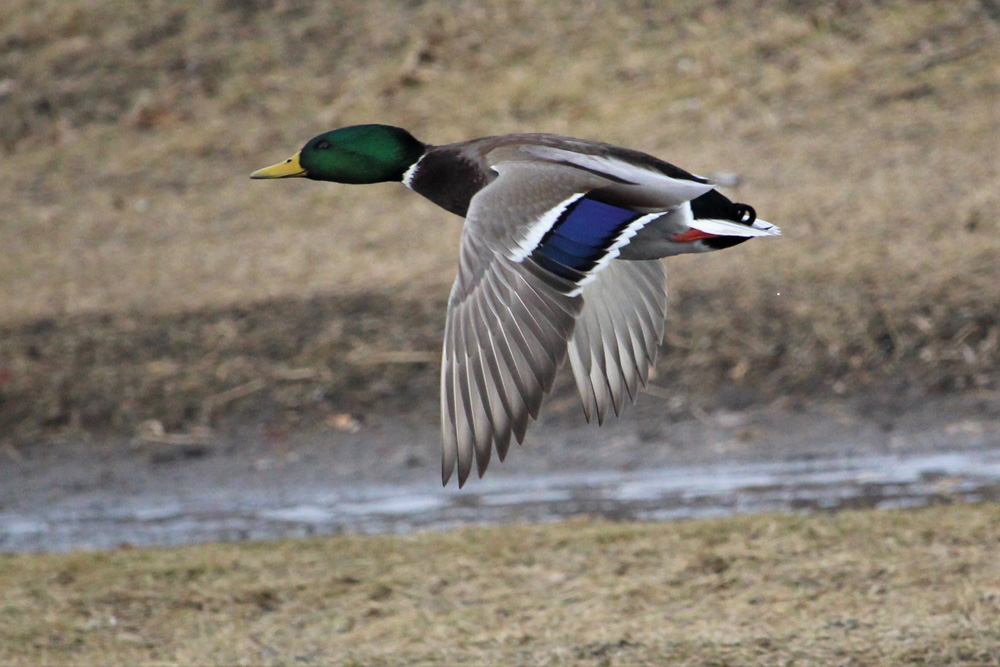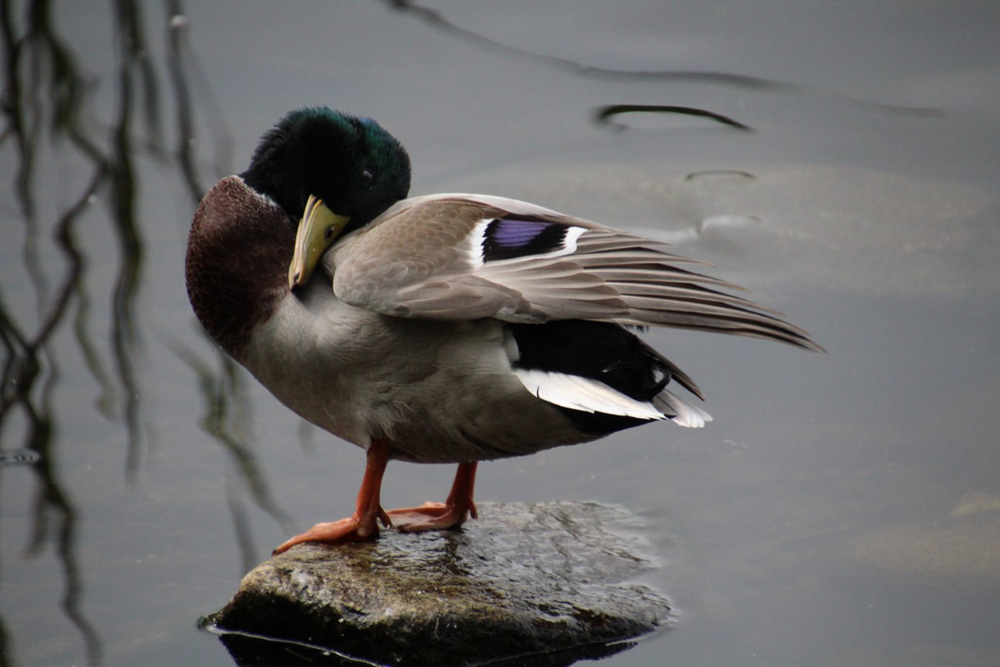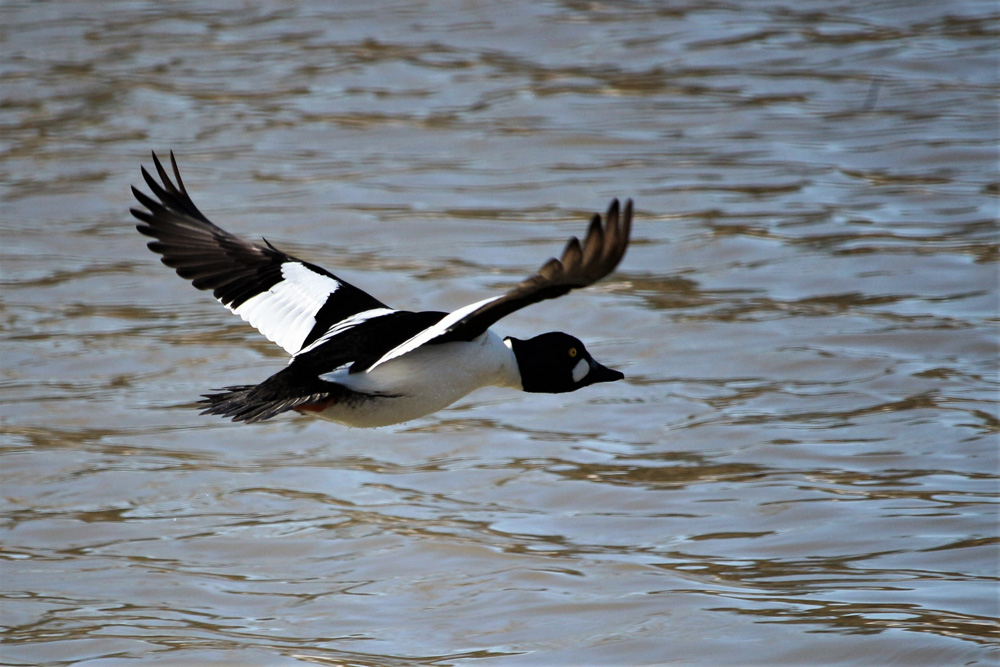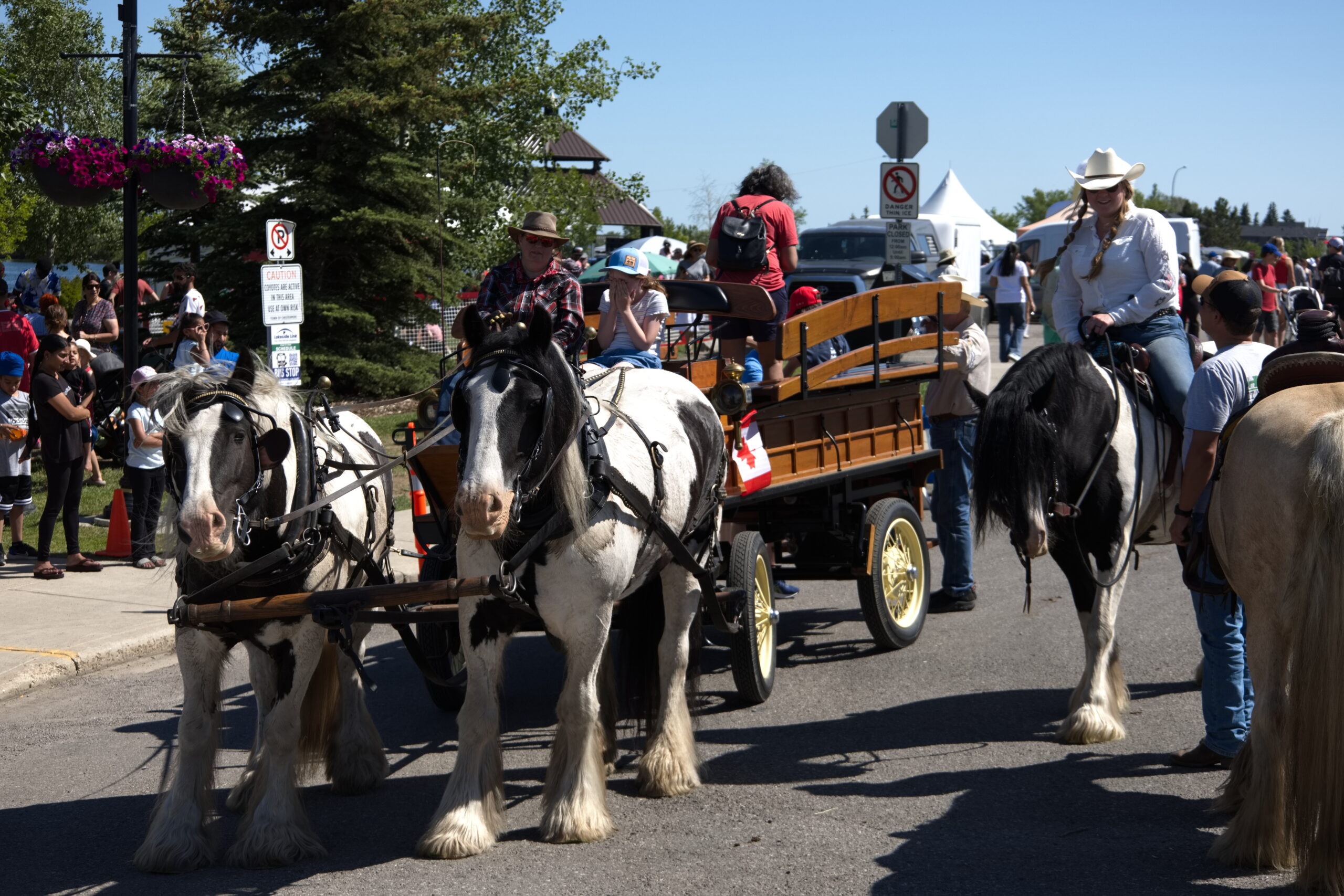Identifying duck species is always engaging and can be challenging, as there can be many similarities between duck species, such as the mallard and northern shoveler. Although one may look at the size, bill shape as well as head and body colors, sometimes another clue is helpful. When in flight, it can be a surprise to see the secondary flight feathers in brilliant color, almost with a metallic sheen and different from the surrounding feathers. This section of the wing is called the speculum – a word of Latin origin meaning “mirror”. Uniqueness in color is but one aspect of speculation about the speculum. One may indeed ask if there is a specific purpose for the speculum feathers.
Initially Elaine and I had thought the speculum feathers were a part of the male attraction package for finding a mate. However, the fact that the speculum of both male and female ducks of the same species are essentially identical, seems to rule that out. In one scientific study using male mallards, the speculum feathers were removed. However these male mallards were just as successful in courtship as those with intact speculums. How this coloration of the speculum occurs involves an understanding of some science. The coloration is derived from structural reflection and the interference of light, not from color pigmentation. Nanostructures in the feathers, essentially hexagonal lattices on the surface of the feathers, scatter light, such as blue for a mallard, in the color spectrum.
The speculum feathers are most visible in flight and better from above or behind. With 22 different species of commonly seen ducks, some unique feature would certainly help ducks of the same species flock together will on migratory journeys. Imagine a flock of ducks, all “flashing” their speculums in flight to keep the flock together. Conversely, with the speculum hidden when on the ground or water, this may provide some way to help hide a female on a nest.
Comparatively, both the color, the size and even bordering of speculums can be different in the duck species. Mallards have a purple-blue speculum, black border all round with white borders on the upper and lower edges. Green-winged teals have a half black and half green speculum, with white bordering on the top of the black section. Northern pintails sport a long, narrow speculum showing dark-green or black-brown, complete with an upper buff border and broad white trailing border.
Things to consider when using a speculum to help identify a duck species are the intensity and angle of light that is being reflected, the color and thickness of the border areas, the length and width of the speculum when compared to the overall size of the ducks wings, and lastly how much of the speculum may still be visible when the duck is not in flight.
Adding to nature’s beauty, diversity and complexity, you can avoid the speculation on speculums by being out in the field, marsh or slough this spring migration.



